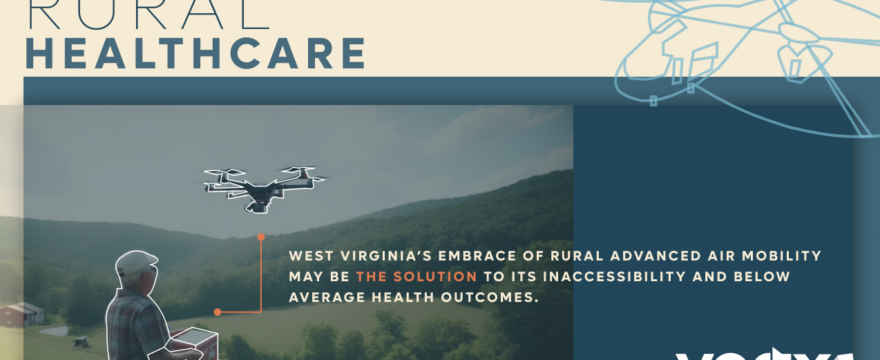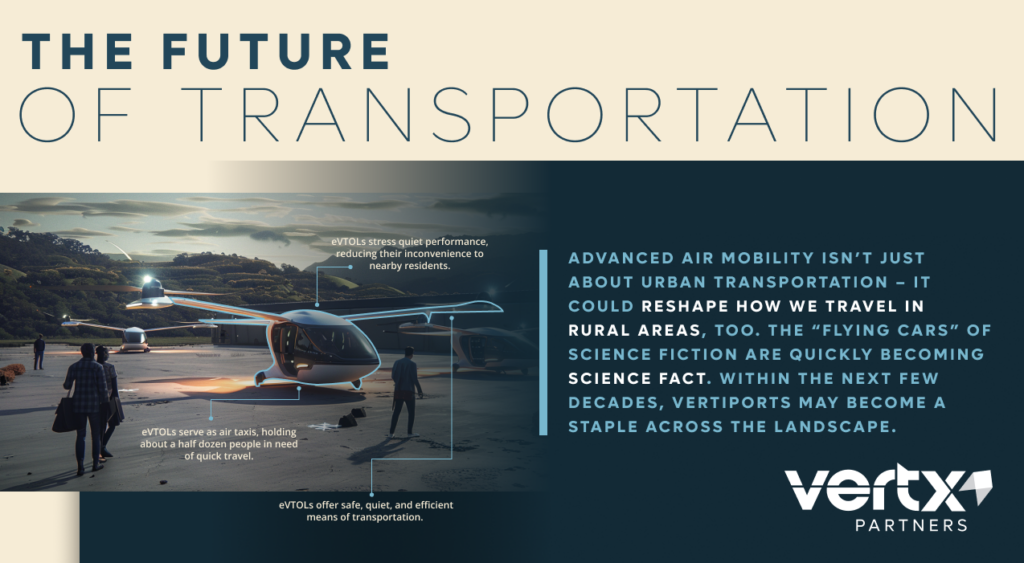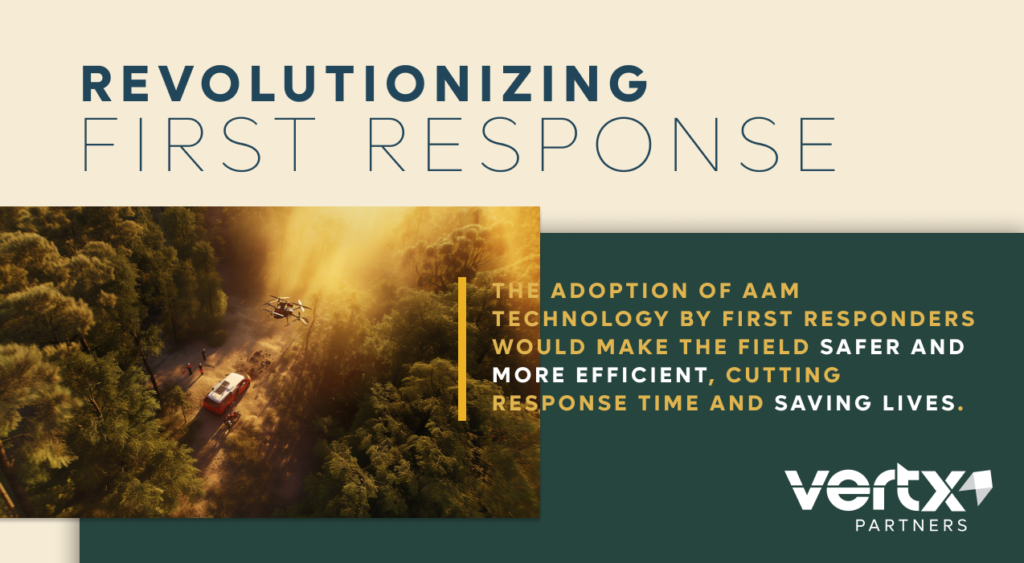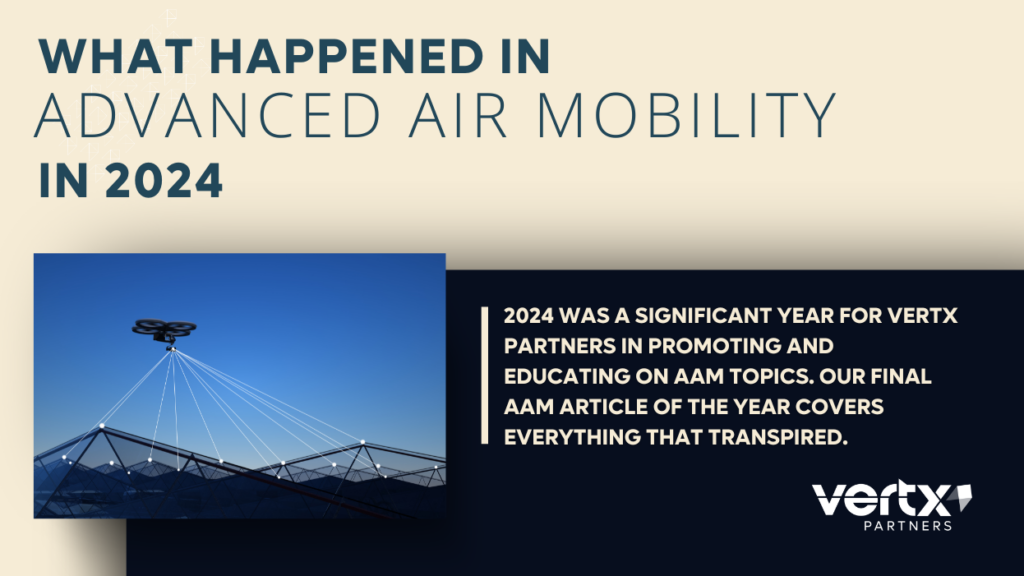Vertx Partners is working to bring Advanced Air Mobility to rural areas like West Virginia. Here’s how AAM will improve healthcare in the state.
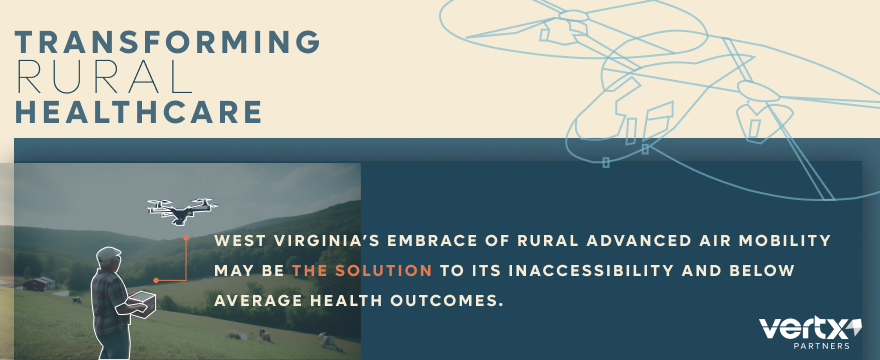
What is Rural Advanced Air Mobility?
When we think of Advanced Air Mobility (AAM), it’s common to conjure images of bustling smart cities and high-tech eVTOLs taxiing wealthy metropolitan citizens high above the crowded streets below, flitting in and out between towering skyscrapers. However, there’s a growing realization that AAM can be a game-changer in rural settings, as well. This is particularly true in a state like West Virginia, where traditional healthcare infrastructure faces significant challenges.
As the Vertx Partners team helped establish a West Virginia Uncrewed Aircraft Systems Advisory Council and hosted the inaugural WV AAM Coalition meeting at the WV High Technology Foundation, we believe it’s time to focus the conversation on Rural Advanced Air Mobility specifically and how it can positively impact a state like West Virginia.
Depending on how one defines ‘rural,’ anywhere from 64% to 93% of West Virginians live in a rural area. Compare this figure to the approximately 20% of total Americans who live in a rural area. Additionally, all except four of WV’s 55 counties are considered Health Professions Shortage Areas (HPSAs) and/or Medically Underserved Areas (MUAs).
So, how can AAM address these cohorts?
How Drones Provide Relief to Patients
One of Rural Advanced Air Mobility’s most promising applications is delivering healthcare supplies via uncrewed aerial vehicles. With such a high proportion of the state isolated in rural areas where travel times to medical centers are inconvenient and/or roads are impassable, medical delivery drones have the opportunity to almost literally bridge a gap by delivering supplies such as insulin to patients in dire need of relief.
In what is oftentimes a matter of life or death, the versatile convenience of these aircraft may prove crucial in dispensing airborne solutions.
This Nature article details how drones are already being used to deliver to underserved communities.
Healthcare Interconnectivity
Drones wouldn’t only create a lifeline between patients and doctors. Drones would also enable doctors and medical centers to deliver supplies between themselves efficiently. This means the swift transportation of organs, blood, and unique treatments between well-equipped facilities and those that are more remote.
It’s easy to imagine where a snake bite victim, for example, might benefit from the rapid delivery of antivenom from another facility adequately stocked with such a specialty treatment.
An Eye in the Sky
For patients in need of more serious treatment but who are located in rural areas where accessibility is a concern, emergency medical services could make use of uncrewed aircraft to assess logistical challenges.
The use cases for this scenario vary from victims of natural disasters like flash flooding to hikers and hunters stranded in the wilderness. An eye in the sky is an invaluable tool for healthcare providers and rescuers and a welcome sight to stranded patients.
Skipping the Line: Airborne Ambulances
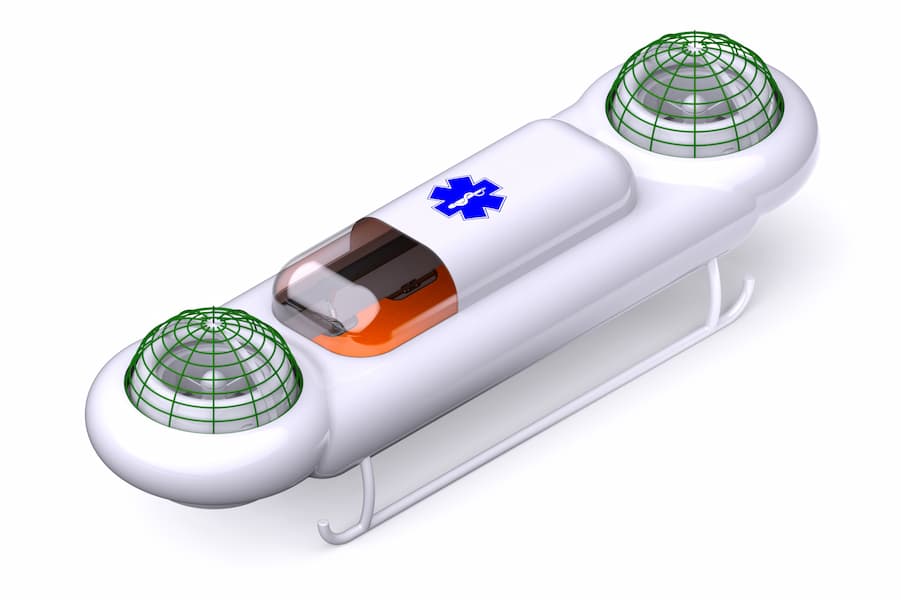
Medical electric vertical takeoff-and-landing vehicles (eVTOLs) may revolutionize healthcare response. Just as the helicopter has become a staple of hospitals worldwide, eVTOLs will quickly become a familiar fixture. Plus, eVTOLS repurposed as ambulances offer a more versatile and cost-effective alternative to helicopters. Plus, they’re far quicker than ground-based ambulances.
For stranded patients, the quiet hum of an approaching medical eVTOL will be the sound of imminent relief.
eVTOL ambulances, like the one proposed by Airborne Motorworks in this article, could become a regular sight in time.
The Soaring Potential of Rural Advanced Air Mobility
West Virginia’s healthcare system is straining under the weight of disproportionally high rural populations, medical inaccessibility, and below-average health outcomes. Rural Advanced Air Mobility has the potential to redefine healthcare in the state.
As Vertx looks to the future, the state’s embrace of AAM could serve as an exemplary model, not just for its residents but for other healthcare systems across the nation.
If you’re interested in joining Vertx Partners’ growing AAM network, contact us today to stay updated on the latest news and innovations in Appalachia.
Become an Innovator With Us
Tell us about yourself, answer a few questions, and hit submit. It’s as easy as that to get started.
